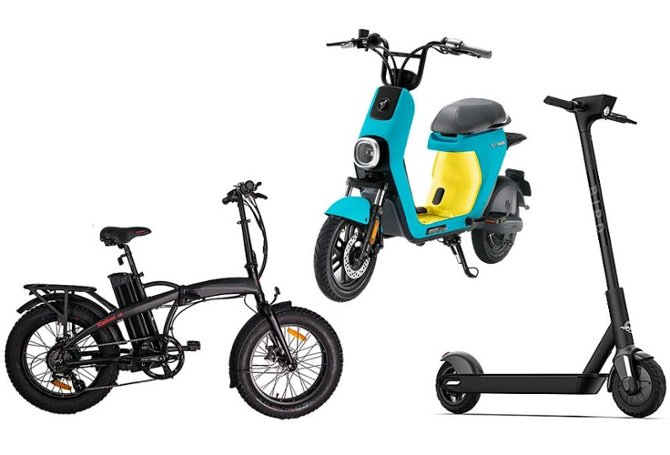
Introduction to Electric Bikes
Electric bikes, often referred to as e-bikes, are rapidly transforming the way we commute and enjoy recreational cycling. These innovative two-wheelers have gained popularity worldwide for their ability to combine the convenience of traditional bicycles with the power of electricity. In this article, we will explore the world of electric bikes, their benefits, technology, and the impact they are making on the way we move.
The Benefits of Electric Bikes
Eco-Friendly Transportation
One of the most significant advantages of electric bikes is their environmental friendliness. E-bikes produce zero emissions and consume far less energy than traditional vehicles. They are a sustainable mode of transportation, reducing our carbon footprint and helping combat air pollution.
Improved Health and Fitness
Electric bikes aren’t just for those seeking an effortless ride; they can also be a valuable tool for promoting physical activity. Riders can choose how much assistance they want from the electric motor, allowing them to exercise at their own pace. This flexibility encourages people to get outside and lead more active lifestyles.
Time and Cost Savings
E-bikes are not only gentle on the environment but also on your wallet. Commuting with an electric bike can save you money on fuel, parking, and public transportation. Plus, in many regions, they are treated as bicycles, which means no registration, insurance, or licensing fees are required.
How Electric Bikes Work
Electric bikes are equipped with a battery-powered electric motor that assists the rider as they pedal. These motors come in various forms, including hub motors, which are located in the wheel hubs, and mid-drive motors, which are integrated into the bike’s frame near the pedals.
The rider can control the level of assistance provided by the motor through a display on the handlebars. Some e-bikes also offer throttle control, which allows the rider to power the bike without pedaling. The electric motor provides a boost to the rider’s pedaling effort, making cycling easier, especially in hilly terrain or against strong headwinds.
Types of Electric Bikes
City/Commuter E-Bikes
These electric bikes are designed for urban environments, featuring a comfortable riding position, fenders, and lights for safe and efficient city commuting.
Mountain E-Bikes (e-MTBs)
Mountain e-bikes are designed for off-road adventures, equipped with robust frames and powerful motors to help riders conquer challenging terrain.
Folding E-Bikes
These compact e-bikes are perfect for commuters with limited storage space. They can be easily folded and stored in a closet or trunk.
Cargo E-Bikes
Cargo e-bikes are designed to carry heavy loads, making them a practical choice for families or businesses looking for an eco-friendly alternative to traditional delivery vehicles.
Technology Advancements
Electric bike technology continues to evolve, with innovations enhancing the riding experience. Some notable advancements include:
Improved Batteries
Modern e-bikes feature high-capacity lithium-ion batteries that offer longer ranges and faster charging times. These batteries are also lighter and more efficient.
Smart Connectivity
Many e-bikes now come with Bluetooth and smartphone connectivity, allowing riders to customize settings, track performance, and receive real-time information about their bike’s status.
Integrated Sensors
Sensors and algorithms are used to adapt motor assistance based on factors like terrain, rider input, and heart rate. This ensures a smooth and efficient riding experience.
The E-Bike Revolution
The electric bike market is experiencing exponential growth. In recent years, sales of e-bikes have surged, and manufacturers are continuously introducing new models with advanced features. This surge can be attributed to several factors:
Urbanization
As more people move to urban areas, electric bikes offer a convenient and eco-friendly mode of transportation to navigate congested city streets.
Health and Wellness Trends
The desire for healthier lifestyles and sustainable choices has driven interest in electric bikes as a means of staying active and reducing one’s carbon footprint.
Government Initiatives
Many governments around the world are encouraging e-bike adoption by providing incentives, subsidies, and improved cycling infrastructure.
The Future of Electric Bikes
The future of electric bikes looks promising. As technology continues to advance and awareness of their benefits grows, we can expect to see even more innovation and integration with other forms of transportation. Some exciting possibilities include:
Electric Bike Sharing Programs
E-bike sharing programs are becoming increasingly common in cities, offering affordable and sustainable transportation options.
Integration with Public Transport
E-bikes can be seamlessly integrated with public transport, allowing riders to easily combine cycling with buses, trains, or subways.
Environmental Impact
As more people opt for electric bikes over traditional vehicles, we can anticipate a significant reduction in air pollution and traffic congestion.
Conclusion
Electric bikes are revolutionizing the way we commute and enjoy cycling. With their eco-friendly nature, health benefits, and evolving technology, e-bikes are becoming an integral part of our urban landscape. The future holds even greater potential for these two-wheeled wonders as we seek sustainable and efficient solutions for modern transportation.
You may also like: